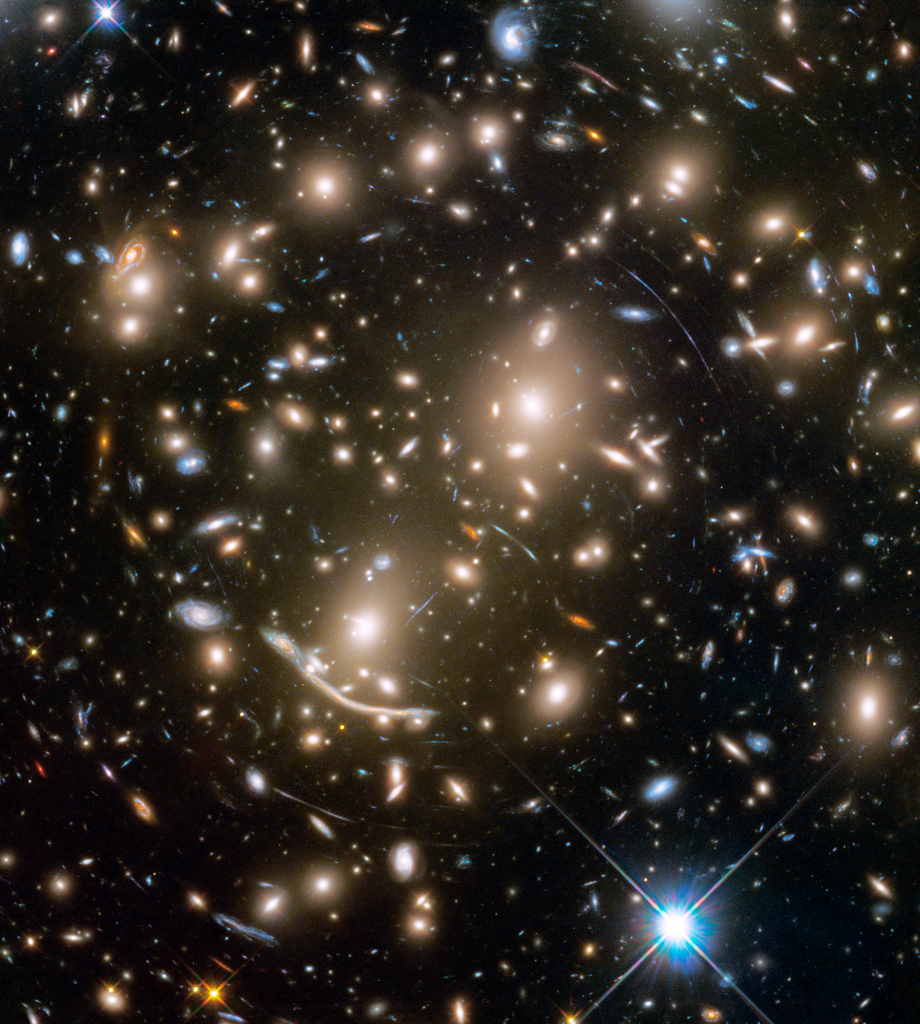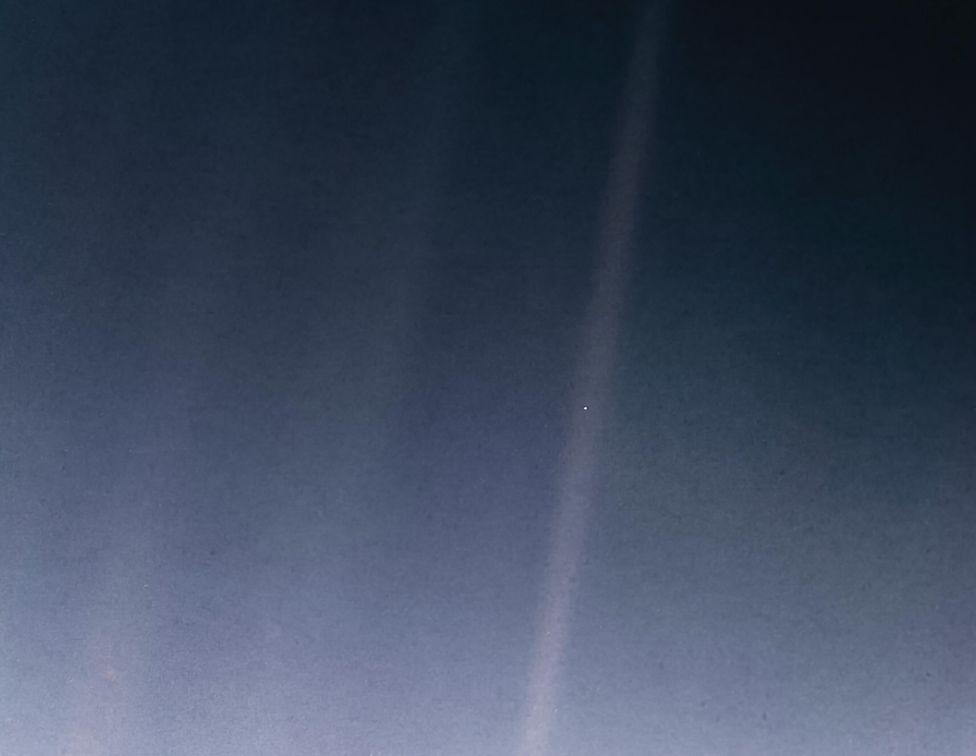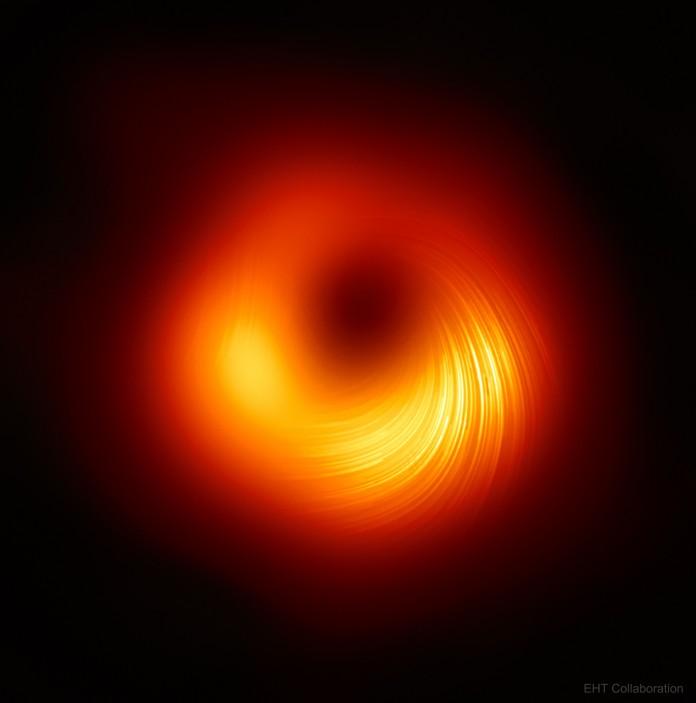Astrophotography, or the capturing of photons of light from distant luminous objects, has long been a phenomenal way to view and study objects outside of Earth’s life-giving atmosphere. Until the recent success of gravitational wave detectors, light was the only way in which we could study the cosmos. From low-frequency radio waves to gamma radiation, these ancient photonic travelers have guided researchers on their quest to answer the most daunting questions the universe has to offer. Sometimes, however, these photons produce images that create a sight more awe-inspiring than we ever could have imagined. In this episode of The Cosmic Mariner, we’re going to take a peek at three important space photographs and discover why they hold a special place in our stellar darkroom.
First Photo of a Black Hole
Captured by the Event Horizon Telescope, a collection of telescopes around the world that combined to create a “telescope” with a diameter equal to that of the Earth, this image of the center of galaxy M87 depicts the first-ever view of a black hole. Before this photograph, astronomers relied only on mathematics and stars orbiting in peculiar patterns around empty space to study the properties of these infamously elusive objects. Now, through the use of data captured by the EHT, researchers have not only been able to refine the image to view magnetic fields generated by the black hole but have also moved one step closer to proving that Albert Einstein’s theory of general relativity is correct. What you are viewing in this photograph is actually a bright disk, called an accretion disk, of materials that are sucked toward and around the black hole at the center. So, while this is a photograph of a black hole, what you’re actually viewing is the shadow of the black hole as black holes are so gravitationally powerful that not even light can escape them. If you want to know more about this photograph and the story behind it, there is a great documentary on Netflix titled “Black Holes: The Edge of All We Know”.
Hubble Deep Field

The Hubble deep field images are probably some of the most fascinating photographs ever captured of our universe. The first of these images, captured by Hubble in 1995, took over 10 days to capture and baffled astronomers when the data was finally compiled. After pointing the HST toward an unremarkable portion of the night sky in the constellation Ursa Major-far away from the plane of the milky way and the path of solar system objects-the final image made over 3,000 distant galaxies visible. Every point of light, no matter the size, is not a star but a galaxy. Even more fascinating; the field of view is roughly the size of a pen-head held at arm’s length. Some of the galaxies viewed are over 12 billion light-years away. That is, we are viewing them as they were 12 billion years ago. This has helped us to uncover a multitude of secrets about the origins of galaxies and the universe itself. More recently, the Frontier Fields images, combining images from Hubble, Chandra, and Spitzer, managed to capture photographs of galaxies 100 times fainter than the deep field images. This was accomplished through the use of gravitational lensing; the lensing of light by the immense gravity fields of distant galaxy clusters. How cosmically cool is that!
The Pale Blue Dot

On the 14th of February, 1990, our planet was captured in a portrait so humbling that, to do it justice, I have to let my hero, Dr. Carl Sagan, explain it. On this date, at the request of Sagan, Voyager 1 turned its camera toward Earth and opened its shutter. When NASA and Sagan reviewed the images, they tried to dust away that tiny blue spec believing it to be a piece of dust. To their amazement, it was, in fact, the Earth. To conclude this episode is an excerpt from Carl Sagan’s speech at the photographs unveiling event.
“That’s here. That’s home. That’s us. On it everyone you love, everyone you know, everyone you ever heard of, every human being who ever was, lived out their lives. The aggregate of our joy and suffering, thousands of confident religions, ideologies, and economic doctrines, every hunter and forager, every hero and coward, every creator and destroyer of civilization, every king and peasant, every young couple in love, every mother and father, hopeful child, inventor, and explorer, every teacher of morals, every corrupt politician, every “superstar,” every “supreme leader,” every saint and sinner in the history of our species lived there–on a mote of dust suspended in a sunbeam…
…It has been said that astronomy is a humbling and character-building experience. There is perhaps no better demonstration of the folly of human conceits than this distant image of our tiny world. To me, it underscores our responsibility to deal more kindly with one another, and to preserve and cherish the pale blue dot, the only home we’ve ever known.
— Carl Sagan, Pale Blue Dot, 1994
Copyright © 1994 by Carl Sagan, Copyright © 2006 by Democritus Properties, LLC.






